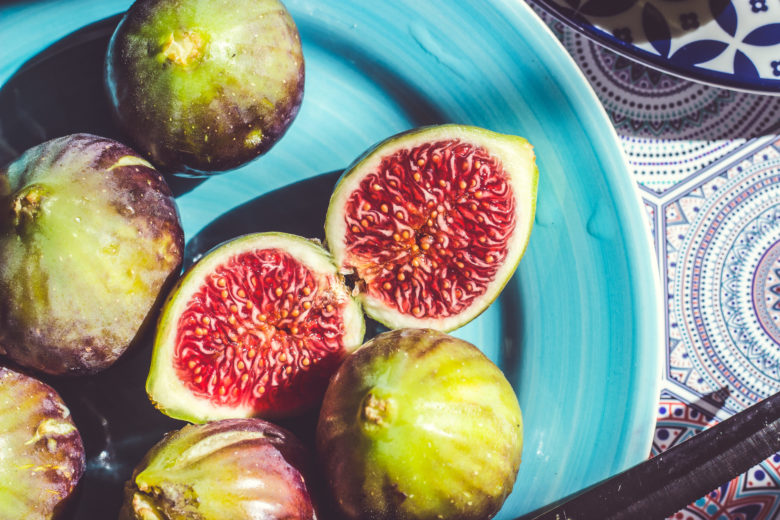
November 5th marked the start of Fig Week, so this is the perfect time of year to explore the great varieties and applications of this flavorful fruit. California houses most of the figs grown here in the U.S, with the majority of them ending up as dried, but they can also be eaten in their fresh state.
Figs themselves are actually flowers that have inverted into themselves, and it is the seeds that are the genuine drupe, or fruit. From bright green flesh to sweet nutty flavor, each variety of fig holds its own distinct beauty and characteristics. While there are hundreds of varieties out there, here are four of the most common fig types, and simple ways you can enjoy each one.
Brown Turkey
The most popular variety, the Brown Turkey is also called the “all-purpose” fig. Growing from mid May through December, this fig has an eggplant-colored skin with a light pink flesh. They can be enjoyed fresh or dried as is, or chopped and sprinkled on a pizza with fresh arugula and goat cheese.
Black Mission
Similar to the Brown Turkey fig, Black Mission figs have a deep purple color and tougher skin with a red flesh. The growing season lasts mid-May through November, and these have an earthy, almost meaty flavor and texture. Try wrapping fresh Black Mission figs in prosciutto and roasting in a 425-degree oven for 10 minutes for a quick appetizer.
Kadota
The light green flesh of the Kadota fig separates itself from the others, and holds a light and mild flavor. The Kadota is another all-purpose fig and is most known for serving as the filling of the Fig Newton cookie. The growing season for Kadota figs is June through October.
Calimyrna
A Turkish Smyrna fig grown in California, the Calimyrna has a pale yellow flesh and nutty flavor. It is mostly enjoyed dried, with a honey-like sweetness, and grown July to September. Stuff dried Calimyrna figs with whipped bleu cheese and chopped walnuts for a simple and satisfying snack.
Fresh figs are highly perishable and should be eaten soon after they are purchased. Most fresh figs can last five to seven days in the refrigerator, while dried varieties can last about a month at room temperature or up to a year refrigerated.








